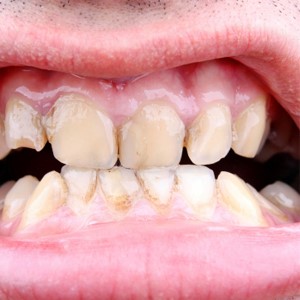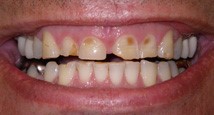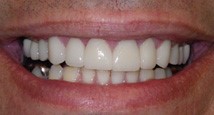Rushmore Dental advanced technologies and laser dentistry accurately detect gum disease and gently and stop its destructive activity in your mouth. Dr. Kelly can reverse its effects and prevent irreparable damage.
The silent threat to your teeth, gums
The symptoms of gum disease in Rapid City may be mild to non-existent in the earliest stages. This feature of gingivitis, as early-stage gum disease is known, underscores the need for regular dental visits as prescribed and customized to your needs and health. Red flags at these earlier stages include:
Symptoms as disease advances
Without proper professional intervention and home care, gum disease can become a full-blown gum infection. Acids in bacterial plaque irritate and eventually break down gum tissues. Pockets form as gums separate from the teeth. These pockets harbor bacteria and, if they grow big enough, the roots of the teeth may be exposed. As bone continues to deteriorate, you’ll know it. Teeth become loose, fall out, or the dentists may not be able to save them with root canal therapy. Infected gum pockets are also characterized by:
A dental crown is an all encompassing restoration for a tooth with a fractured or broken cusp, or when the shell of the tooth is weakened by a sizeable amount of decay or previous filling.
Many people believe that they will lose most of their tooth by getting a crown, but in reality the root and bulk of the tooth structure remains. The crown is actually a means to save the tooth and protect it from further breakage. A crown may also relieve tooth sensitivity much more than a conventional composite filling.
Our crowns are made of porcelain or gold. Both are excellent choices.
Gold is very strong, long-lasting, and compatible with your natural teeth. The anatomy of the crown is fabricated by our lab for an ideal anatomical match to the adjacent and opposing teeth. At times, you may not prefer the color of gold which is why we have porcelain crowns to perfectly match the shade of your natural teeth.
Our porcelain crowns are made of the newest, most durable zirconium-based materials available. The crowns are designed using CAD-CAM precision computer technology and fit perfectly for an esthetically-pleasing look with the best possible bite. Zirconia is biocompatible and integrates well with the human body. The result is a brand new tooth which nicely matches to the shade of your natural teeth.
Porcelain crowns can fracture if you have an unusually hard bite, or if you like to chomp ice or very hard foods. Either gold or porcelain will break down more quickly without proper home care; brushing and flossing, and regular dental cleanings and check-ups.
Dr. Kelly will describe the characteristics of each type to you when you are considering a crown. But ultimately, you will select which material you want in your mouth.
Your new crown will last a minimum of five years. But, with good home hygiene, you may expect it to last a lifetime.




